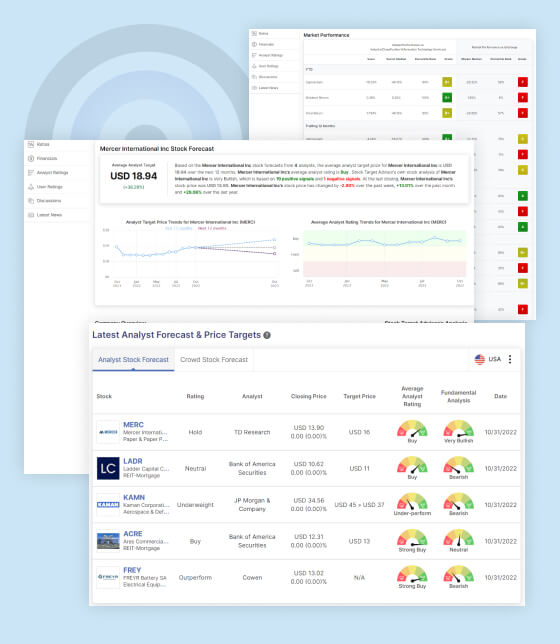TSX Faces Correction on Economic Woes
Canada’s TSX Composite Index, a benchmark representing the performance of the Toronto Stock Exchange, has long been a barometer of the nation’s economic health. However, recent developments suggest storm clouds gathering on the economic horizon. From escalating inflation and soaring housing costs to dwindling productivity and constrained capital spending, Canada faces a myriad of challenges that could potentially spell trouble for its financial markets. In this article, we delve into the factors contributing to the TSX’s vulnerability and explore the possibility of a significant downturn, with the index potentially plummeting to the 15,000 range.
Economic Realities Facing Canada: Before delving into the TSX’s prospects, it’s crucial to understand the economic backdrop against which it operates. Canada is grappling with a host of challenges that threaten to impede economic growth and investor confidence.
- Escalating Inflation: Inflationary pressures have been mounting, fueled by supply chain disruptions, rising energy costs, and increased demand as the economy rebounds from the pandemic-induced downturn. The Bank of Canada’s efforts to curb inflation through interest rate hikes have sparked concerns about the impact on borrowing costs and consumer spending.
- Soaring Housing Costs: Canada’s housing market has been on a tear, with prices skyrocketing to unprecedented levels in many cities. This housing affordability crisis not only poses risks to financial stability but also exacerbates wealth inequality and hampers access to homeownership for many Canadians.
- Energy Costs: The surge in energy prices, driven by geopolitical tensions and supply constraints, has significant implications for Canada, a major oil and gas producer. While higher energy prices may benefit the energy sector, they pose challenges for consumers, businesses, and industries reliant on affordable energy.
- Slump in Productivity: Canada’s productivity growth has been lackluster in recent years, hindering its long-term economic competitiveness and prosperity. Factors contributing to this slump include underinvestment in technology, skills mismatches in the labor market, and regulatory barriers to innovation.
- Excessive Population Growth: Canada’s population has been growing rapidly, driven primarily by immigration. While population growth can fuel economic expansion, it also strains infrastructure, exacerbates housing shortages, and puts pressure on public services and natural resources.
- Decrease in Capital Spending: Business investment, particularly in sectors such as manufacturing and resource extraction, has been sluggish, reflecting uncertainty about the economic outlook, regulatory hurdles, and global trade tensions. A decline in capital spending could dampen productivity growth and hinder Canada’s economic recovery.
TSX Composite Index: Vulnerabilities and Technical Indicators: Against this challenging economic backdrop, the TSX Composite Index faces mounting vulnerabilities that could trigger a significant downturn. Technical indicators, combined with broader economic realities, paint a sobering picture for Canada’s financial markets.
- Bearish Technical Signals: Technical analysis of the TSX Composite Index reveals bearish signals, with key indicators suggesting potential downside risk. From moving average crossovers to relative strength index (RSI) readings, various metrics point to weakening investor sentiment and waning bullish momentum.
- Economic Headwinds: The TSX’s performance is closely linked to Canada’s economic fundamentals. As inflation erodes purchasing power, consumer spending may contract, weighing on corporate earnings and stock valuations. Moreover, housing market volatility, energy price fluctuations, and subdued productivity growth could further dampen investor confidence.
- Global Uncertainty: Canada’s economic fortunes are intertwined with global developments, including geopolitical tensions, trade disputes, and shifts in monetary policy. Escalating conflicts or economic downturns in key trading partners could ripple through Canadian financial markets, amplifying volatility and downside risks for the TSX.
- Monetary Policy Dilemma: The Bank of Canada faces a delicate balancing act as it navigates the twin challenges of inflation and economic growth. Tightening monetary policy to rein in inflation could inadvertently stifle economic activity and curb investor appetite for equities, while maintaining accommodative policies risks fueling inflationary pressures and asset bubbles.
Potential Impact on Investors and Markets: If the TSX Composite Index were to experience a significant downturn, the implications would be far-reaching for investors, businesses, and the broader economy.
- Investor Caution: Investors may adopt a more cautious stance, reallocating portfolios towards defensive assets such as bonds and cash, and reducing exposure to equities, particularly those sensitive to economic cycles.
- Business Uncertainty: Heightened market volatility and economic uncertainty could deter businesses from making long-term investment decisions, leading to a further slowdown in capital spending and hiring.
- Economic Contraction: A sharp decline in the TSX could exacerbate Canada’s economic woes, triggering a contraction in consumer spending, business investment, and employment, with knock-on effects across various sectors of the economy.
Final Considerations: In conclusion, Canada’s TSX Composite Index faces significant downside risks amid a confluence of economic headwinds and bearish technical indicators. From inflationary pressures and housing market volatility to sluggish productivity growth and tepid capital spending, the challenges confronting Canada’s economy are manifold and could precipitate a notable downturn in its financial markets. Investors would be wise to exercise caution and closely monitor developments, as navigating the uncertain terrain ahead requires prudence and adaptability.

STA Research (StockTargetAdvisor.com) is a independent Investment Research company that specializes in stock forecasting and analysis with integrated AI, based on our platform stocktargetadvisor.com, EST 2007.
































